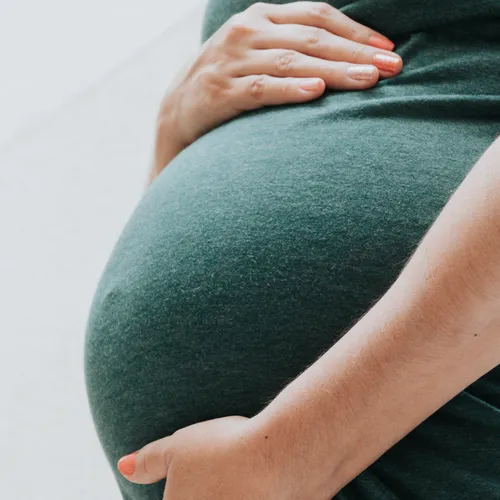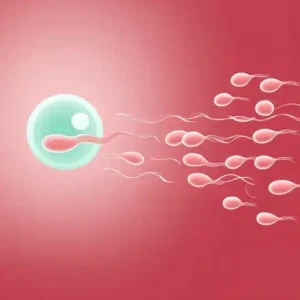Pregnancy is an amazing process that transforms a tiny cluster of cells into a fully formed baby over approximately 40 weeks. It’s a time of great change for a woman’s body as it adapts to nurture the developing fetus. Pregnancy is divided into three trimesters, each with its own milestones and symptoms. Here’s an overview of what expectant mothers can anticipate during each stage.
First Trimester (Weeks 1-12)
For many women, the first signs of pregnancy come from missing a period followed by nausea, fatigue and frequent urination. These early symptoms are caused by rising hormones like estrogen and progesterone as well as increased blood circulation.
During the first 12 weeks, the fetus develops rapidly from a group of cells into an embryo with nearly all organ systems formed. The heart begins beating around 6 weeks and is visible on ultrasound. By week 12, the foetus has distinct human characteristics but is still only around 2 inches long.
Some key developments in the first trimester include:
- Placenta forms to provide oxygen and nutrients to the fetus
- Major organs like kidneys, liver and lungs begin developing
- Facial features take shape including eyes, nose, ears and mouth
- Bones, muscles and nerves start forming
- Arms, legs, hands and feet are visible by end of trimester
To support foetal growth, pregnant women should take prenatal vitamins, avoid alcohol/smoking, minimise caffeine and eat a balanced diet. Regular doctor visits help monitor baby’s progress.
Second Trimester (Weeks 13-27)
Many women find the second trimester the most comfortable part of pregnancy. Common early symptoms like nausea and fatigue often fade by weeks 16-20. The fetus continues developing rapidly and mothers can begin feeling movement.
Key changes in the second trimester include:
- Foetus is around 12 inches long and weighs over 1 pound by week 27
- Sex organs form; ultrasound can reveal gender around week 20
- Foetus develops sleep/wake cycles and begins hearing sounds
- Bone marrow forms to create blood cells
- Lungs mature in preparation for breathing after birth
- Brain development leads to kicking and stretching
Prenatal Screening and Testing
In addition to regular checkups, many pregnant women undergo various screening and diagnostic tests during the second trimester to monitor the health of the foetus. Common tests include:
- Quad screen (weeks 15-20): A blood test that measures levels of 4 pregnancy-related hormones to calculate the risk of genetic abnormalities like spina bifida or Down syndrome. Further testing may be recommended if the risk is high.
- Anatomy scan (weeks 18-22): An ultrasound that checks foetal growth and the condition of major organs like the heart and brain. It can reveal potential issues like heart defects or extra fingers/toes. The sex of the baby may also be visible.
- Gestational diabetes screening (weeks 24-28): A blood sugar test determines if women have developed diabetes during pregnancy, which can affect foetal growth. Treatment helps control blood sugar levels.
- Cell-free foetal DNA test (from week 10): A blood test analyses fragments of foetal DNA to detect Down syndrome and other chromosomal conditions with >99% accuracy, reducing the need for riskier amniocentesis testing.
Prenatal tests provide reassurance when results are normal. Abnormal results allow doctors to plan any extra care needed during pregnancy and delivery to address issues that are detected early. Women should discuss pros and cons of testing with their provider to decide what is right for them.
To accommodate the growing foetus, pregnant women may experience backaches, increased vaginal discharge, and skin changes like stretch marks. Preparing a nursery and taking birthing/parenting classes can be exciting parts of the second trimester.
Third Trimester (Weeks 28-40)
In the home stretch of pregnancy, both mother and foetus go through major changes to prepare for delivery. The foetus continues gaining weight and its body systems ready for life outside the womb. Women often feel more tired and achy as their due date approaches.
Noteworthy changes in the final trimester include:
- Foetus gains half its birth weight and settles into birthing position
- Bones harden but skull remains soft and flexible for delivery
- Lungs fully develop by week 36; brain matures
- Women experience Braxton Hicks contractions and increased vaginal discharge
- Breasts start producing colostrum, the nutrient-rich first milk
- Expectant mothers may have trouble sleeping and swelling in hands/feet
Staying active with light exercise can help expecting mothers prepare for labour and delivery. Frequent medical checkups monitor baby’s growth and watch for complications like high blood pressure. Towards the end, women may feel their water break signalling the start of labour.
The human body undergoes incredible changes over 40 weeks to transform egg and sperm into a tiny but fully functional newborn baby. While every pregnancy is unique, understanding the general timeline helps expectant mothers know what to expect at each stage. With proper prenatal care and a healthy lifestyle, women can give their developing babies the best start in life.
Giving Birth and Meeting Baby
The amazing journey of pregnancy culminates in childbirth. Early labour often starts with water breaking and contractions. Active labour brings stronger and more frequent contractions to progressively dilate the cervix.
When the cervix is fully dilated, the woman starts pushing the baby through the birth canal in the second stage of labour resulting in delivery of the infant. The third stage involves delivering the placenta. Labour typically lasts 8-12 hours for first pregnancies.
Right after birth, the moment parents meet their newborn is filled with emotion. Babies are placed skin-to-skin with mothers to bond. With medical checks complete, families spend the next days getting acquainted with their addition as they rest and recover in hospital.
Those first infant cries and cuddles make everything worthwhile after 40 remarkable weeks of pregnancy. Though challenging at times, carrying and nurturing a baby is an experience that creates an unbreakable connection between parent and child.
Zoom Baby is a leading supplier of Pregnancy Tests and Ovulation Test Kits





